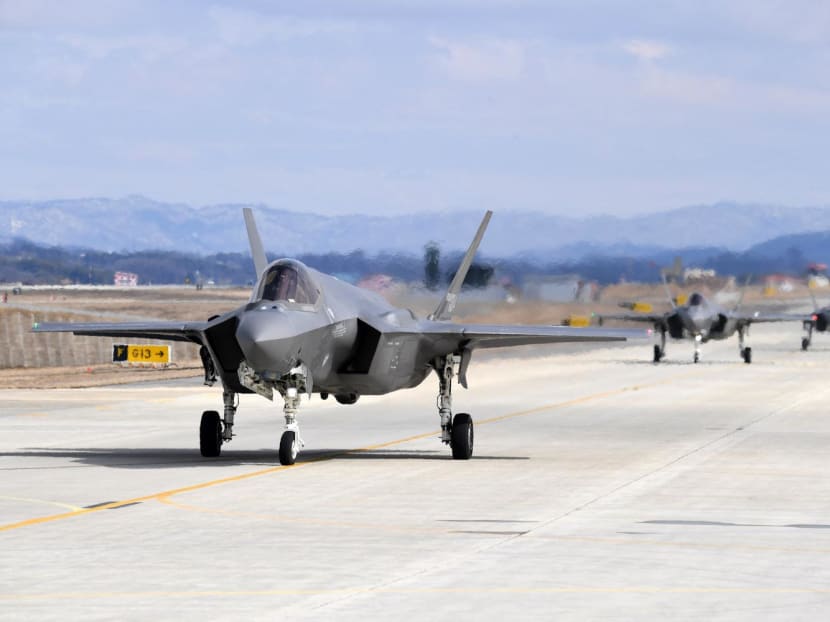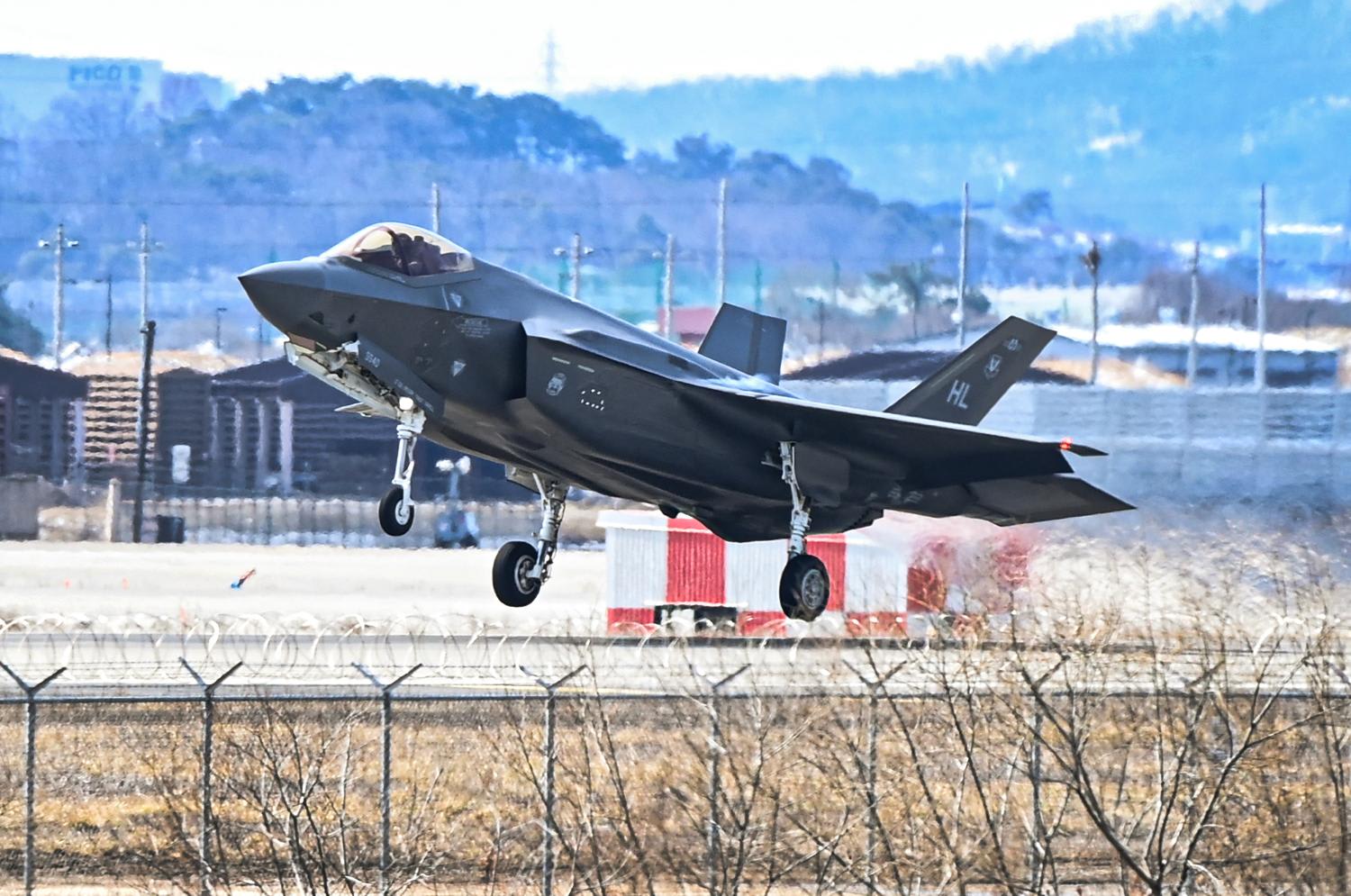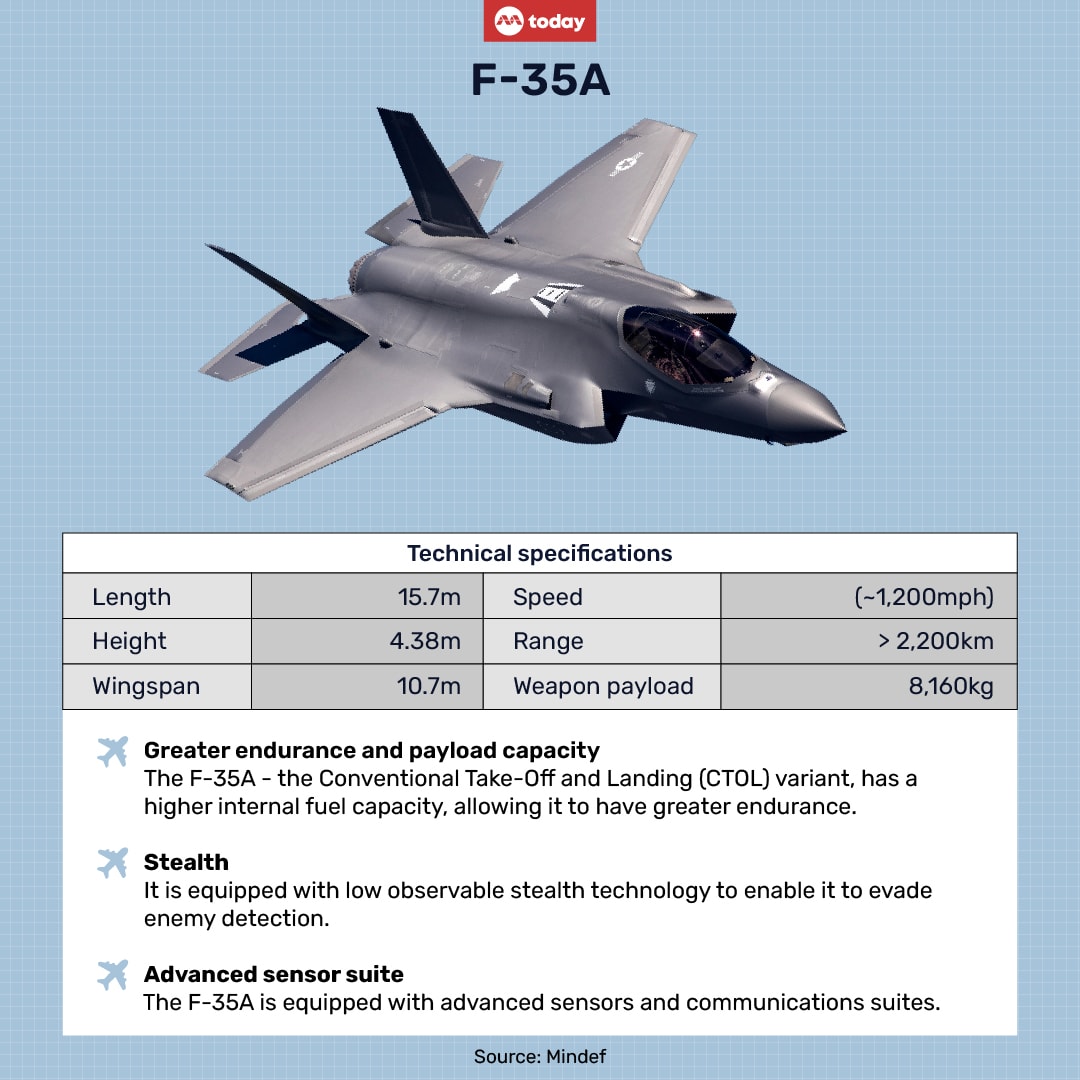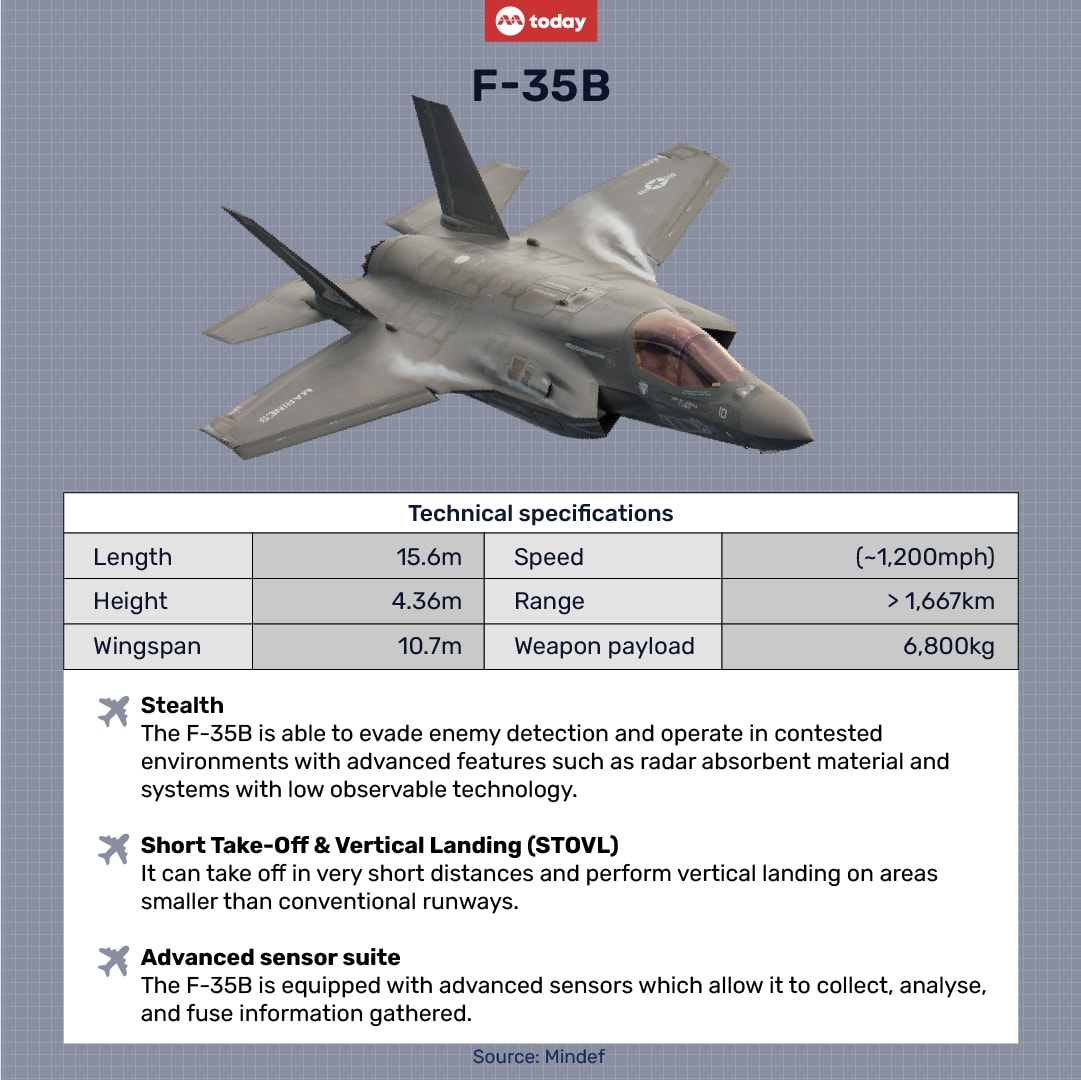Commentary: How F-35A acquisition takes SAF's fighting capabilities to the next level

This handout photo taken and released on Feb 23, 2024 by the South Korean Defence Ministry shows South Korean Air Force F-35A fighter jets preparing to take off from a South Korean Air Force base in Cheongju during a South Korea-US joint air drill.
When Defence Minister Ng Eng Hen announced the acquisition of eight Lockheed Martin F-35A aircraft for the Republic of Singapore Air Force (RSAF) during the debate on his ministry’s budget on Thursday (Feb 28), the Russia-Ukraine war had been going on for two years and four days.
The war had bogged down into a stalemate, with both sides unable to make significant advancements. The Russians had become hesitant to launch their high-end combat aircraft near the frontlines after several aircraft were shot down by a myriad of Ukrainian air defence systems, while the latter simply lack a strong air force.
“The Russia-Ukraine conflict has reinforced the importance of achieving air superiority,” said RSAF Chief, Major-General Kelvin Khong, in a written interview ahead of the Singapore Airshow 2024.
“I believe that if either side had achieved air superiority, the conflict would have taken on a very different trajectory. There is a higher probability that it would not have been so long and protracted.”
The F-35A is arguably one of the last pieces in the RSAF’s next-generation air superiority road map, which will include the short take-off/vertical landing F-35B and the F-15SG. The trio will play complementary roles in an air combat scenario.
‘WINDOW OF OPPORTUNITY’
The Ministry of Defence’s (Mindef) decision comes after a string of orders from Switzerland, Germany, Canada, and the Czech Republic, decisions all made after the outbreak of the war.
Already cheaper than the F-35B, Mindef was likely betting on this new round of orders by European countries as air forces ramp up their modernisation efforts.

Indeed, Dr Ng said that with around 2,500 F-35s on order, the price is now “more competitive” and Singapore will “capitalise on this window of opportunity” to accelerate its F-35 programme.
A unit price for the F-35A was around US$100.5 million in fiscal year 2022, and has slid to US$92.5 million in 2024, according to United States Air Force (USAF) documents.
This round of orders from Europe will likely push that cost lower, and Mindef is jumping on this bandwagon for a good price with an optimal delivery timeline.
This means that the RSAF will have a steady stream of F-35s coming into service: Starting with four F-35Bs from 2026, eight F-35Bs from 2028, and the F-35As from 2030, in time for the gradual retirement of the F-16 fleet between 2030-2035.
In today’s environment where capacity and supply chains are stretched, securing a good early delivery slot is crucial to RSAF’s modernisation.
With both variants based on similar airframes, the RSAF can also benefit from streamlined maintenance. Mindef’s Next-Generation Fighter Project Office also said the pilots will be cross-trained as necessary, giving the RSAF flexibility to assign and deploy aircrew based on its mission requirements.
WILD CARD
The F-35B can be seen as the wild card, allowing the RSAF to continue to generate air power even as airfields are compromised, thanks to its short take-off and vertical landing features, while retaining the same stealth and powerful network-centric warfare capabilities found on the F-35A.
The Ukraine war has shown how strong air defence systems have suppressed the establishment of air superiority on both sides.
Yet when USAF F-35A flew missions near the Ukraine border, sponging up data and the location of Russian air defence systems and radar signatures, they also demonstrated their high-end electronic warfare capabilities.


In an operational scenario, one would expect the F-35s to spearhead the strike to take out key defence systems while collecting and sharing crucial enemy data. The F-35s will be followed closely by the F-15SGs with their large payload.
In an earlier commentary, I used the metaphor of a building to describe an enemy air defence and infrastructure: The stealthy F-35s would kick down a building’s door, allowing the F-15SGs to enter and destroy the building from within.
Assuming that the RSAF runways are damaged and under repair, the F-35B will use its short take-off and vertical landing capability to land, refuel, rearm, and return to the fight, while the F-35A and F-15 stay in the air, refuelled by Multi Role Tanker Transport aircraft.
It is this cross-command integration within the RSAF that will keep the tempo of air power generation and achieve air superiority over the adversary.
LEVELLING UP
The last piece of the puzzle would be RSAF’s likely upgrade of the F-15SGs later in the decade.
Nearly 20 years since its roll-out in 2008, the scope of upgrade could include new features found on the F-15EX, with enhanced electronic warfare packages, avionics, and integration of new munitions — such as the GBU-39 Small Diameter Bombs that will give the F-15SG pinpoint surgical strike capabilities.
The introduction of the F-35s is a clear signal that the Singapore Armed Forces are bringing their fighting capabilities to the next level, from a conventional fighting force into the stealth age.
Paired with rare expertise in aerial tanking, airborne early warning, and network-centric warfare, this will put the RSAF into a league that will take decades for many to catch up.
ABOUT THE AUTHOR:
Chen Chuanren is a freelance defence journalist and contributes to publications such as Aviation Week and Shephard Media.






